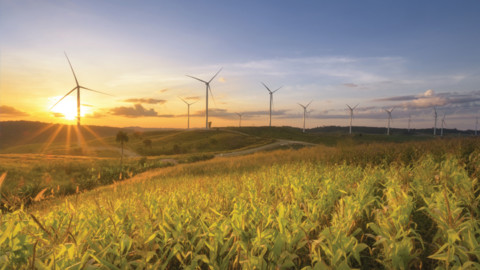The Australian Energy Market Operator has created a new model to track gas composition from diverse sources in order to help ensure the accuracy of billing and stability of gas supply in Victoria.
The gas transmission system (which moves fuel through the network to demand centres, distribution metering points and transmission connected customers) changes are a prime example of proactive and innovative system improvements and advances actioned by AEMO to keep up with the changing Australian energy industry.
AEMO performs a series of functions in the Australian gas and electricity markets including operating the gas Declared Transmission System (DTS) which serves Victoria.
Under the National Gas Rules (NGR), AEMO is responsible for determining the source of data of the gas flow being measured (a volume of gas contains a certain amount of energy, combusting this gas over a period of time converts the gas volume to energy) in the DTS (which consists of approximately 2200km of high pressure transmission pipelines with various lengths and diameters).
The Victorian Declared Wholesale Gas Market (DWGM) and DTS network manages over 200PJ of gas flows and settles just under $900 million dollars in transactions annually.
Custody Transfer Meters (meters located where the transmission system connects to the production, storage, interconnected pipelines and distribution systems) are used to measure energy flows for market settlement, and these meters measure gas volume flow (not energy flow).
The heating value is used to convert gas volume flow to gas energy flow. The heating value of gas can vary, based on the chemical composition of the gas and the production source.
In networks where there are only a few sources of gas and where these sources give near constant quality, and near constant flow, there are standard, simple methods of determining the energy value of gas received by consumers.
However, if the transmission system is supplied by multiple gas sources, which is the case in the Victorian DTS, then identifying the correct energy content for billing purposes can be quite challenging.
Some means of identifying the correct energy content would allow for more accurate and fairer billing. This is where a solution based around a Real Time Transient Model (RTTM) to track gas composition from diverse sources throughout the Victorian DTS network to the end users was developed.
The model determines the heating value of gas supplied to the network’s distributors and the output from the real-time model is combined with measured gas flows to ascertain the energy flows used in settlements.
This new model was required in order to enable further development and expansion of a roadmap for future improvements to transmissions metering.
The benefits of the new system will include:
- Greater accuracy – more accurate energy flow calculations as the new system replaces the manual calculation processes, and will automate the heating value data allocation on a more frequent basis
- Ability to maintain and support – the proposed heating value allocation system will integrate with existing market and grid management systems. It will enable increased flexibility for future enhancements as the technology and the network evolves
Although recently commissioned, this new Heating Value Allocation Model is a major innovation development in the Australian gas network and one which the AEMO believe provides the necessary stability, flexibility and sophistication required as the industry continues to evolve well into the future.
















